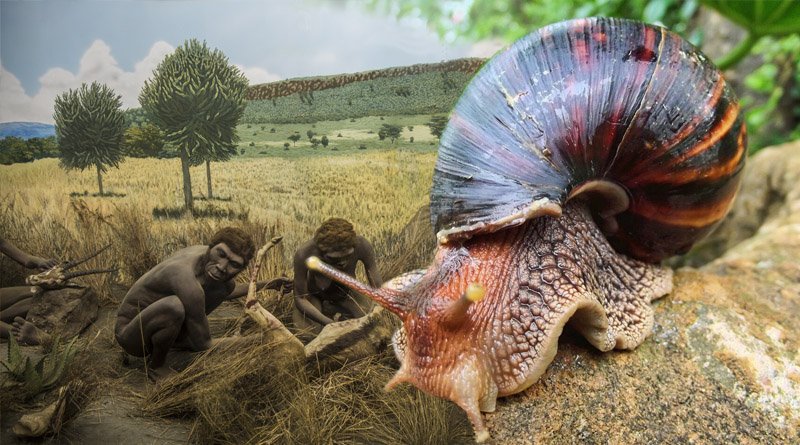Homo sapiens ate land snails as early as 170,000 years ago, with the oldest evidence being from Africa and Europe.

Homo sapiens ate land snails as early as 170,000 years ago, with the oldest evidence being from Africa and Europe. People at a southern African rock shelter roasted these slimy, chewy, nutritious land snails, which can grow as big as an adult’s hand, in the April 15 Quaternary Science Reviews.
Chemist Marine Wojcieszak and colleagues say that analysis of shell fragments found in South Africa’s Border Cave shows that hunter-gatherers who occasionally lived there heated large African land snails on embers and then likely consumed them. Wojcieszak is a researcher who works at the Royal Institute for Cultural Heritage in Brussels.
He examines the chemical characteristics of ancient sites and artifacts. According to the researchers, between 160,000 and 70,000 years ago, the enormous delicacy rose to prominence. The quantity of unearthed snail shell fragments was significantly higher in the sediment layers from that era.
According to Wojcieszak, new findings at Border Cave cast doubt on the widely held belief that human populations did not make nutritious land snails and other small game a significant part of their diet until the last Ice Age peaked between 15,000 and 10,000 years ago.
The team claims that long before that, hunter-gatherer people in southern Africa prowled the countryside, gathering large land snails to bring back to Border Cave for themselves and to share with others. The researchers speculate that some of the group members who stayed behind on the forays to gather snails may have had restricted mobility because of old age or injury.
The elderly and young children, who are less able to chew hard foods, would have benefited from the easy-to-eat, fatty protein found in snails, claims Wojcieszak. Sharing food in Border Cave demonstrates that cooperative social behaviour existed from the beginning of our species.
According to archaeologist Antonieta Jerardino of the University of South Africa in Pretoria, the ancient people who ate snails in Border Cave also lived a few thousand years before the beginning of human consumption of mollusks. Prior research at a cave on the southernmost tip of South Africa revealed that humans were likely eating mussels, limpets, and other marine mollusks as early as 164,000 years ago.
By 170,000 years ago, ancient H. sapiens recognised the value of nutritious land snails and occasionally cooked and ate them. This is unexpected and raises questions about whether climate and habitat changes may have reduced the availability of other foods.
The ancient inhabitants of Border Cave cooked starchy plant stems, consumed a variety of fruits, and hunted both small and large animals, according to research. At Border Cave, the oldest known grass bedding from about 200,000 years ago was also discovered. Since 1934, the location has been the subject of numerous excavations.
The most recent Border Cave dig, which lasted from 2015 to 2019, was overseen by three archaeologists working on the new study: Francesco d’Errico of the University of Bordeaux in France, Lucinda Backwell, and Lyn Wadley of Wits University in Johannesburg.
The new investigation was motivated by the findings of that team. With the exception of the oldest sediment layers containing traces of campfires and other H. sapiens activity, excavations turned up shell fragments of large land snails, many of which were coloured by possible burning.
At least 227,000 years have passed since the oldest layers were formed. 27 snail shell fragments from various sediment layers were examined chemically and microscopically, and the results were compared to shell fragments from contemporary large African snails that had been heated in a metal furnace. Temperatures in the experiments ranged from 200 to 550 degrees Celsius. Five minutes to 36 hours were used for heating.
The majority of ancient shell fragments, with the exception of a few, showed signs of prolonged heat exposure, indicating that they were once attached to snails that were cooked over hot embers. Microscopic cracks and a dull finish on shell surfaces were indicators of heating.
The researchers speculate that the mixture of burned and unburned shell fragments discovered at Border Cave may be explained by the fact that only lower portions of large land snail shells would have rested against embers during cooking.
